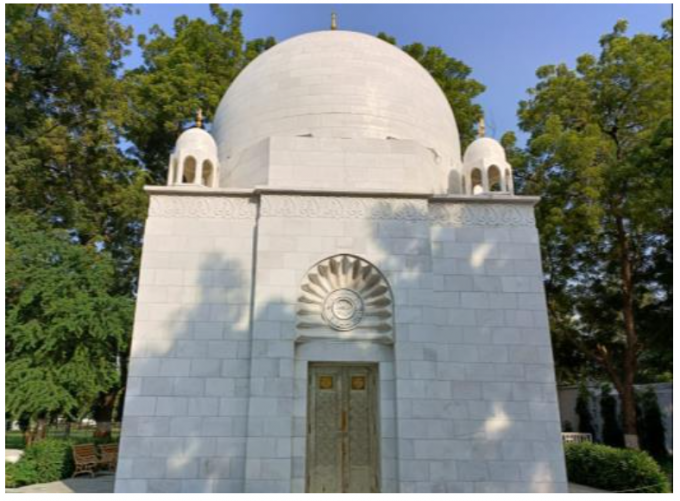
Professor Zoyab Alihussain Kadi
Ahmedabad, steeped in history with its varied past, is at once a reflection of human frailty and excess. That apart, its dry, dusty and debilitating climate, for nearly half the year, requires outsiders a few seasons to get used to. But the Dawoodi Bohra community can hardly be called outsiders. They have been here ever since the beginning of the 15th century, (maybe even earlier), when the Muzzaffarid dynasty shifted their capital here from Patan and the place was renamed as Ahmedabad, by Ahmed Shah I. The community’s checquered experience in this region during the first two hundred years was marred by phases of relentless persecutions alternating with uneasy reconciliations.

Globally, the 16th century was a period when the foundations of a Modern Age were unknowingly being laid elsewhere. In faraway England, an unexceptional queen, the last of the Tudors, had given permission for her traders to visit India under her seal; setting in motion a rivalry amongst European nations for a bitter hegemony across the seven seas. It was a period when the Ottomans were masters of the triple world of Islam, Christianity and Judaism with their writ running harshly over religious minorities, especially in Yemen. It was also a period when Emperor Akbar, third in the Mughal line, was consolidating his empire in the subcontinent; preaching war and peace at the same time; toppling smaller dynasties all across north India. Thankfully for the Tayyibi Bohra community, the Muzzaffarids of Gujarat was one of them.

Despite the tempest that may have been raging all around, the religious leadership of the steadily increasing flock of the Community (soon to be known as the Dawoodi Bohras) anchored itself firmly in the local soil. With considerable foresight, and stoically putting up with prevailing calamities, it realised the vast future potential for peace, harmony, tolerance and growth in this new environment. The 24th Dai Mutlaq, al-Dai al-Ajal Syedna Yusuf Najmuddin RA, the first Dai from Hind, hailed from Sidhpur. Under his tenure, the Dawat made a smooth transition from Yemen to Hindustan. However, Syedna Yusuf chose to journey to Yemen a few years into his blessed reign and remained there till its end; his revered tomb being in Taiba, a suburb of San’a today. Thus began a new chapter of Dais of Hindustani origin in Hindustan leading the Dawat.

His successor, the 25th Dai, Syedna Jalal Shamsuddin RA, was a native of Ahmedabad who had a short tenure as Dai Mutlaq but was, nevertheless, great in stature. Syedna Jalal Shamsuddin RA was laid to rest on 16th Rabi al-Aakhar 975 AH/ 19th October 1567 CE, just five or six years before Gujarat came under the benign and more tolerant influence of the Mughal emperor, Akbar. Syedna Jalal’s mazaar shareef in his home town marks the first of a Dai in the subcontinent. Today, his qabr mubarak is perhaps the largest, in width, in India among the quboor mubaraka of Duat Mutlaqeen RA, a reflection of his grand standing. Located in a serene corner of the vast and lush Mazar-e-Qutbi campus, his qubba mubaraka presents a picture of earthy solidity with its heavy bulbous dome almost spanning from wall to wall; leaving just enough space at the corners, above the squinches for small stone lanterns. Its outer unostentatious appearance, built as recently as 1981, is in keeping with the architectural tradition of Fatimi Qubbas. The fan shaped arch design above the entrance doorways was inspired from the nine hundred year old al-Jami al-Aqmar in Cairo.

Disclaimer–Viewpoints in blog posts do not necessarily reflect those of RadiantArts.
The author, Professor Zoyab Bhai Kadi is a senior architect and planner by profession. Apart from being a mentor to Triple O Studio, he has a keen interest in architectural conservation. He has over 35 years of experience in the field and worked with Louis Kahn on the IIM-A project. He has vast experience in the educational field and has been a member of inspection teams for the Council of Architecture, AICTE and the Board of Studies, Andhra University. He completed his Bachelor’s in Architecture from the School of Architecture and Planning, Anna University and his post-graduation in Town and Country Planning from the School of Planning and Architecture, Delhi. He has been at the forefront to document the heritage houses of the Dawoodi Bohra Community in Sidhpur and has published three titles and several journal articles on Sidhpur.

Leave a comment
You must be logged in to post a comment.